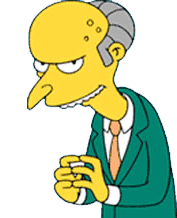Friday night in Dublin and the country’s top soccer league is in action. From Tolka Park to Dalymount, the ‘Stadium of Light’ in Inchicore to Bray, up to seven League of Ireland matches could be played in a catchment area of well over a million people. Total attendance for the night? About 10,000. It is hard to believe that 40 years ago, the Tolkas and the Dalyers were packed to the rafters with 20,000 people at each match. The League of Ireland meant something to people then; it was something to look forward to each week, and the likes of Paddy Coad, Paddy Ambrose and Liam Tuohy were all local legends, revered as the Wayne Rooneys and Steven Gerrards are today. But society and tastes changed, and the League was never able to adjust. In contrast to the GAA, which is always been planning 20 years ahead, League of Ireland clubs were always wondering where next week’s wages would come from.
So why is it that football, the most popular sport in the world, is in terminal decline on this island? Eamon Dunphy, once a childhood fan and now one of the League’s staunchest critics, is typically forthright. “It is the kind of people that are in the League of Ireland. A breed of person that is small town, county councillor, freebie, who contributes nothing and takes as much as they can. They have always held the power in Irish soccer and still do to this day. They don’t like big ideas and they don’t like independent-minded people around because they upset the apple cart and will show up the other clubs… Nothing good is ever allowed to develop here because they won’t allow anyone to do it. They want what is best for the lowest common denominator. And that will always be the case.”

Not that long ago – in 1977 – Eamon Dunphy and John Giles had a plan to lift Irish soccer out of the doldrums and to compete with anything that England and Europe had to offer. Giles had returned to Dublin after a hugely successful career in England with Leeds United and set about making Shamrock Rovers a force again, with Dunphy as one of his coaches.
A full-time set-up with first-class facilities was to be the start of things; and as Rovers improved so too, it was hoped, would the other clubs; a rising tide would lift all boats and soon the League would be keeping its best players and competing at the highest level in Europe.
But after three years, Shamrock Rovers had only won one FAI Cup and were unable to win the League to qualify for the European Cup. Dunphy left and Giles soon followed.
“They wanted to keep it down at their level,” says Dunphy. “They didn’t want us to rise because they knew that they couldn’t rise and they didn’t want a professional club ‘dominating the League’ as they put it. These were small-minded people with their own parochial interests. It took me six months to realise that this was happening. I had given up as a player then and I made the decision to come home. I had massive opportunities in England – huge opportunities – Fleet Street and all sorts of things, but I committed to the League of Ireland because I really thought I could change it and modernise it, blah, blah, blah… Boy was that a mistake!”
“I even gave my FAI Cup winners medal away after we won the FAI Cup in our first season. I gave it to the guy that got me my NUJ card and I didn’t think nothing of it. I have never been back to a League of Ireland ground since.”








 Quote
Quote










Bookmarks